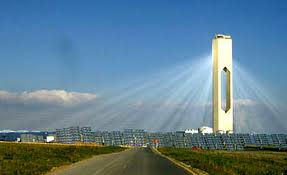The Australian Capital Territory intends to establish a 50MW solar technology innovation centre that will feature next generation solar technologies and storage, continuing its leadership role in Australian renewables.
The initiative comes as part of the ACT’s goal of commissioning some 550MW of renewable energy generation by 2020 to meet its goal of sourcing 90 per cent of its electricity needs from renewable sources.
The ACT continues to be the shining light – and some would say the only light – for large-scale renewables in Australia as it expands its auction system to encourage new renewable generation. Last week it also announced a plan to encourage 1MW of community-based solar in the territory.
In the next few weeks, the ACT will outline its plans for wind energy, with an auction of a “significant amount” of capacity to take place within a few months. An auction for waste-to-energy projects will also be held.
Elsewhere in Australia, large-scale renewables have come to a standstill because of uncertainty about the renewable energy target, and because developers rely on getting a power purchase agreement from large retailers.
The creation of a 50MW solar precinct is the most innovative of the proposals so far, and follows the successful auction of 40MW of solar PV capacity last year. Those three projects are now under construction, or about to be commenced.
 ACT energy minister Simon Corbell says he is seeking expressions of interest to identify potential sites and potential technologies. These could include battery storage, concentrated solar thermal systems, including with storage, and other technologies.
ACT energy minister Simon Corbell says he is seeking expressions of interest to identify potential sites and potential technologies. These could include battery storage, concentrated solar thermal systems, including with storage, and other technologies.
The focus is on storage, and the ability to make the output of the solar systems “dispatch able”. Hopefully, the precinct might include some advanced solar tower and storage projects of the like now being built in the US.
Corbell says the costs of such technologies would likely be more expensive than wind, but the ACT government was also interested in the “industry development” potential of having such a centre.
Corbell told RenewEconomy in an interview that the ACT wants to continue its emphasis on solar, but wants to leverage opportunities that exist in the territory around advanced solar research. “The ANU is doing a large body of work on this – if we can provide financial incentives and link it with research, we will get outcomes on abatement and on economic opportunities.”
The call for expressions of interest will run this year, with an “auction” of projects and capacity likely to take place in 2015.
The ACT will release its plans for wind generation and the timing and capacity of an upcoming auction in the next week or two. This is much anticipated by the wind industry in Australia, because it is the only bright spot in a bleak environment affected by the government’s review of the renewable energy target, and its apparent desire to reduce or even “castrate” the RET.
Corbell said the uncertainty around national policy could produce a good outcome in the wind energy auction. “There are a lot of projects that have been approved or are close to approval – we expect significant competition for wind,” he said. “The uncertainty in the federal market is going to make that competition more intense.”
However, Corbell said there was a danger that ongoing uncertainty or a decision to wind back capacity could cause some major international companies to walk away from the country.
“That is a risk,” he said. “It’s a dismal (policy) environment right now. It is absolutely essential that certainty is returned to market, with clear definite future of the RET, and one that does not destroy Australia’s reputation as a stable environment to invest.”
Corbell also said he would be speaking up for renewables at the next energy ministerial council – he may well be joined by the Tasmania energy minister, if comments by Liberal leader Will Hodgman are anything to go by.
“It is time for a stronger voice for renewable energy market,” he said. “I will be doing everything I can … but we need a very clear recognition that without strong and clear policy stances, we risk a flight of capital. That is not in the interest of the economy, nor of renewable energy.”








